From Russia with Sustain - The "Viola" Sustainer Pedal
Last updated 08/13/23
By Paul Marossy
Here is another obscure 1970s USSR era guitar pedal that was intriguing enough to purchase from a seller in Moldova (a small country between Ukraine and Romania). According to the
owners manual the manufacturer of this pedal is "PO 'Alpha' Riga", which I assume is Riga, Latvia. The owners manual says that it "increases the duration of the sound without distorting the natural timbre, which allows you to imitate the sound of bowed instruments and play chords. A variety of effects is achieved due to the presence of compression level and volume controls." Surely that must have been the inspiration for the name of this pedal.
It makes use of an interesting IC chip known as an M72-3, aka K1400UN1. It is an AGC (automatic gain control) with massive amounts of again - somewhere around 4,000-5,000 for very small signals. It appears that this IC chip was designed for voice applications and in this circuit it was adapted for use with an
electric guitar. There aren't any IC chips I know of that I could compare it to directly. With some help from R. Strand, using the best chip schematic we could find, we came up with an LTSpice model that seems to more or less fit the specs on the datasheet. Admittedly everything is based on educated guesswork since the chip schematic does not give specific component values. The Viola circuit schematic is shown below. It's a pretty simple circuit only needing a handful of parts besides the IC chip. In addition to compressing/sustaining the signal it
can also add a touch of pleasant sounding distortion by pummeling the input of the amplifier with a healthy boost (of course this is highly dependent on what
amplifier you are using).
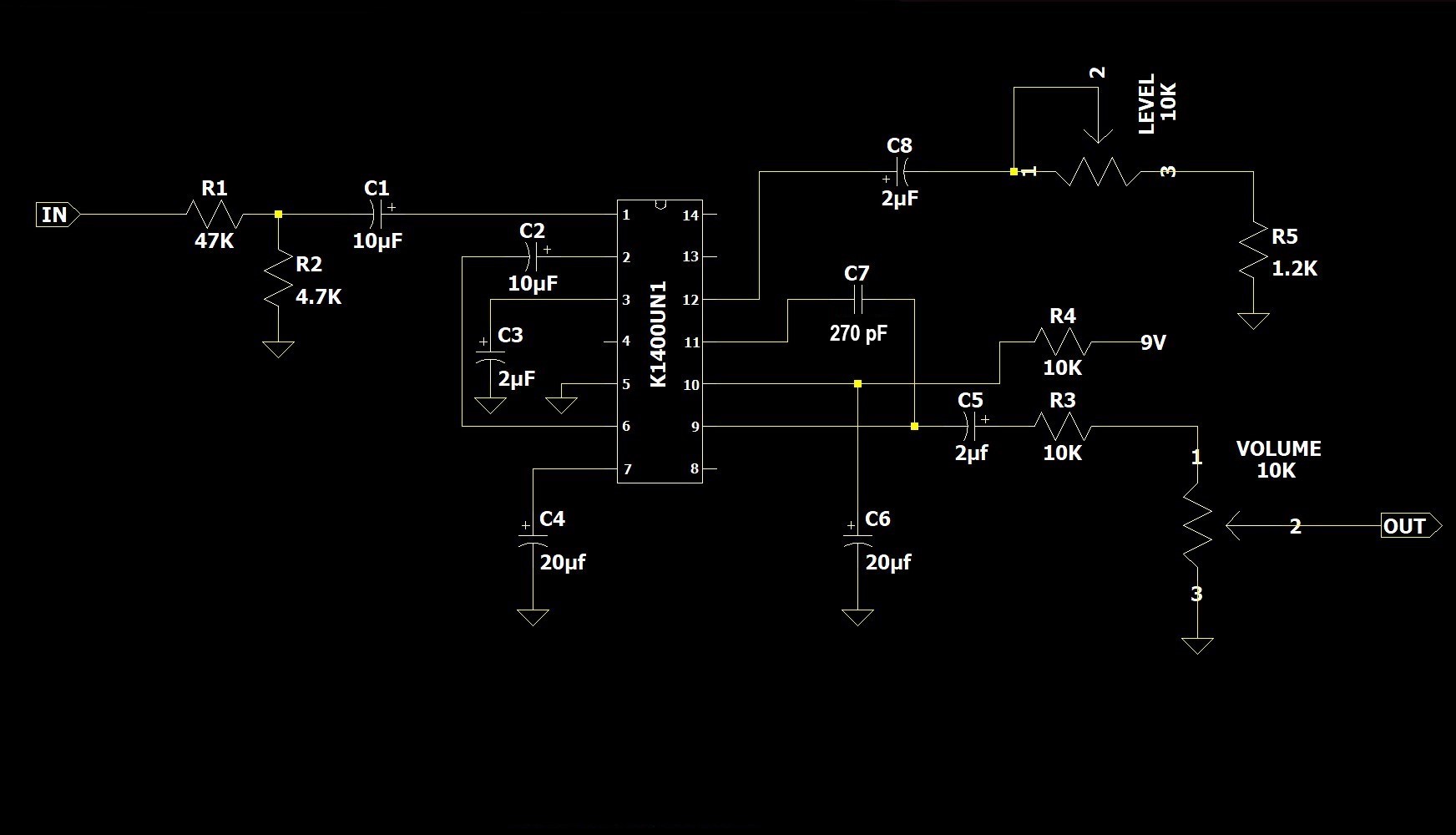
Below are some details of this Viola compressor pedal which was manufactured in 1979.
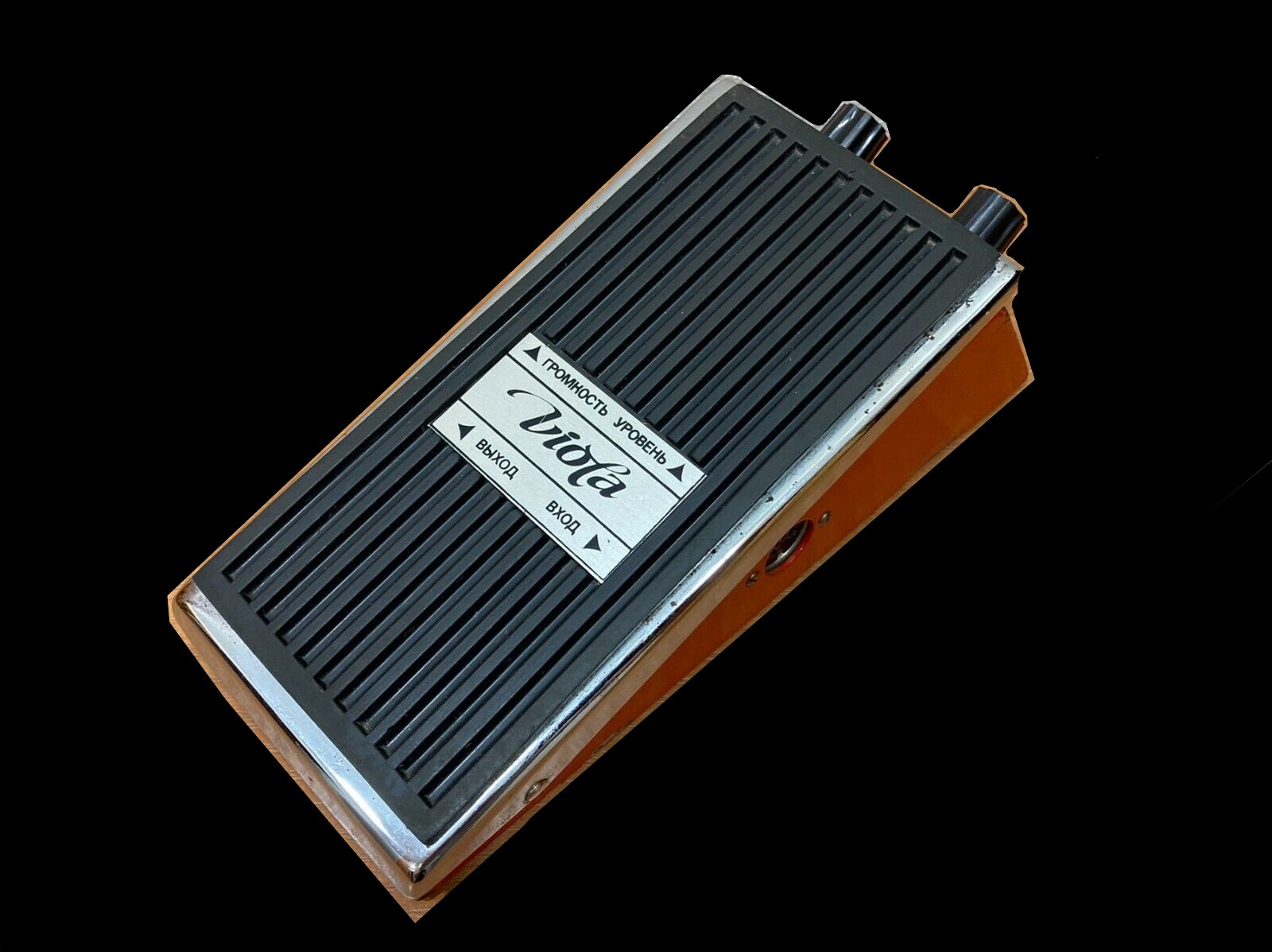 |
Top view. As is the case with many of the USSR era guitar pedals, it looks like a wah pedal but it's not. The treadle's only function is to actuate the bypass switch. |
 |
Side view. Utilizes the 5-pin DIN jack convention used at the time. The form loosely follows the Kazan Booster shape & size. I changed the jacks to 1/4" type using an adapter plate as I did with the Kazan Vibrato, and I also changed the wiring so the input jack is the one that switches the power on/off. |
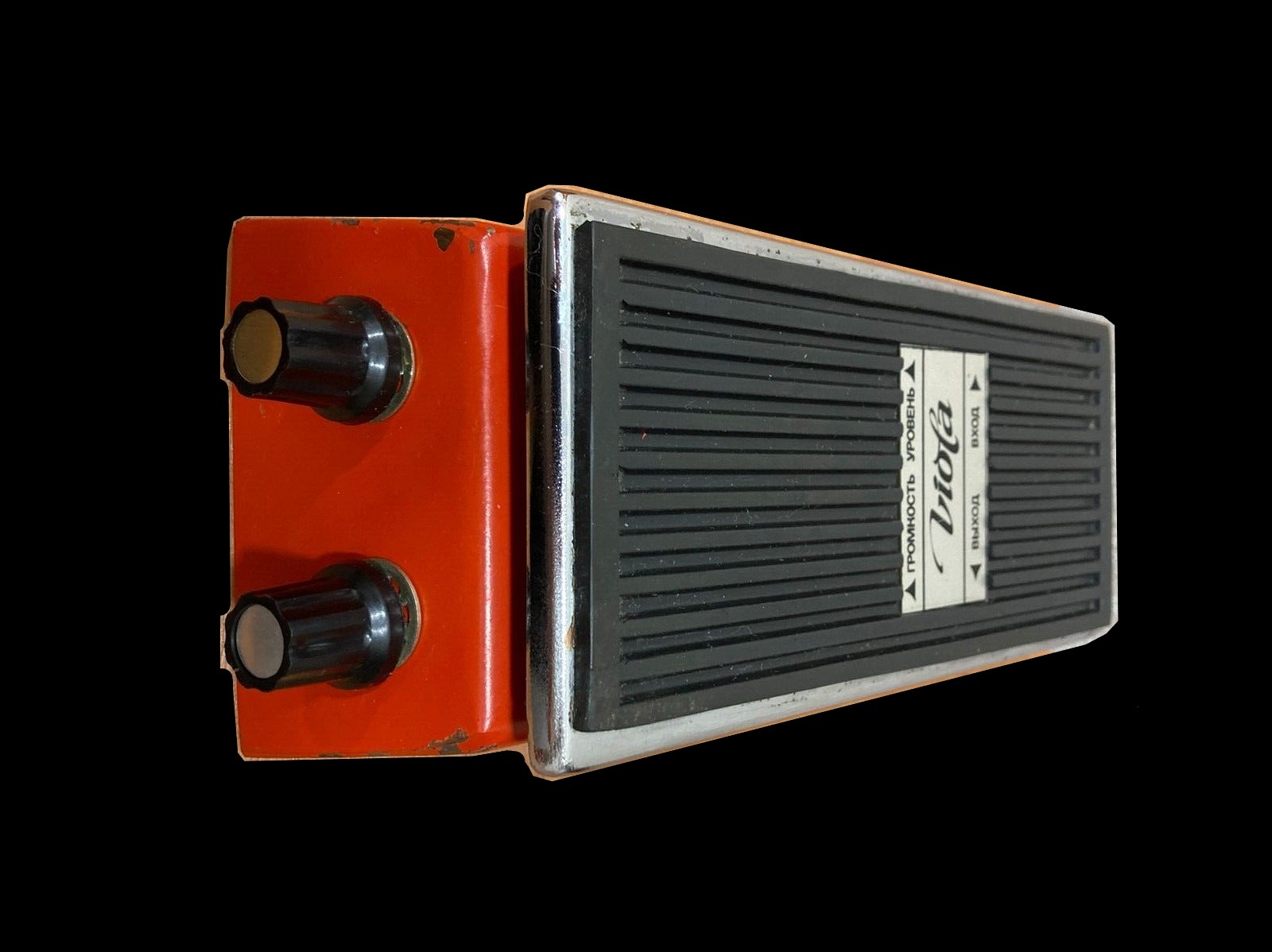 |
There are two controls, level and volume. The level control varies the amount of compression applied to the signal. |
 |
Here is the bottom. Very basic, just a flat piece of sheet metal attached to the shell with small screws. |
 |
There is a logo stamped into the metal but I do not know exactly what it stands for. I assume the "R" represents Riga? |
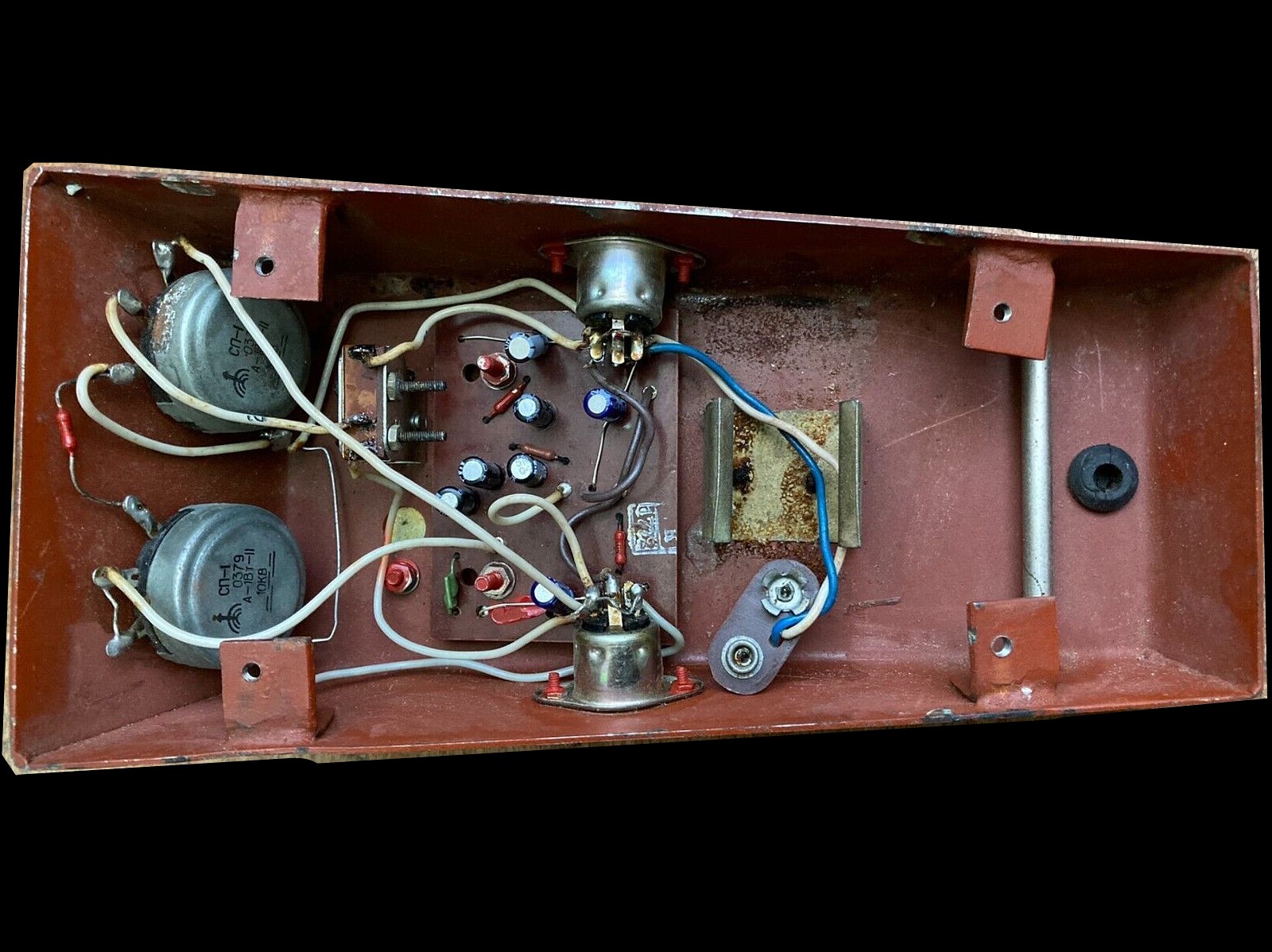 |
Here it is with the bottom cover removed. At first glance it appears that there are only capacitors and resistors but the IC chip is hiding on the bottom side of the PCB. |
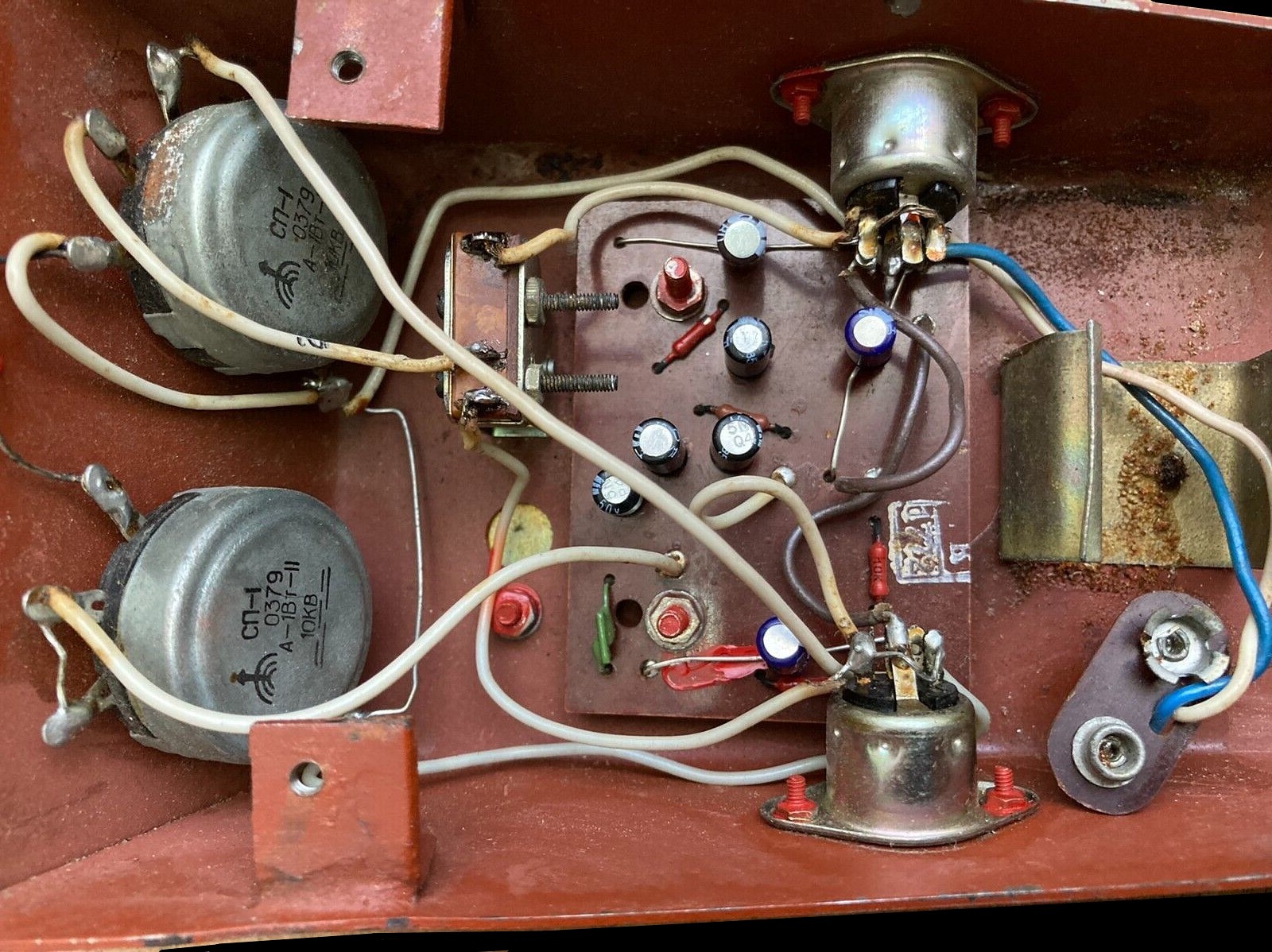 |
Here is a little closer view of the inside. The date codes on the pots indicate that this was manufactured late 1979. |
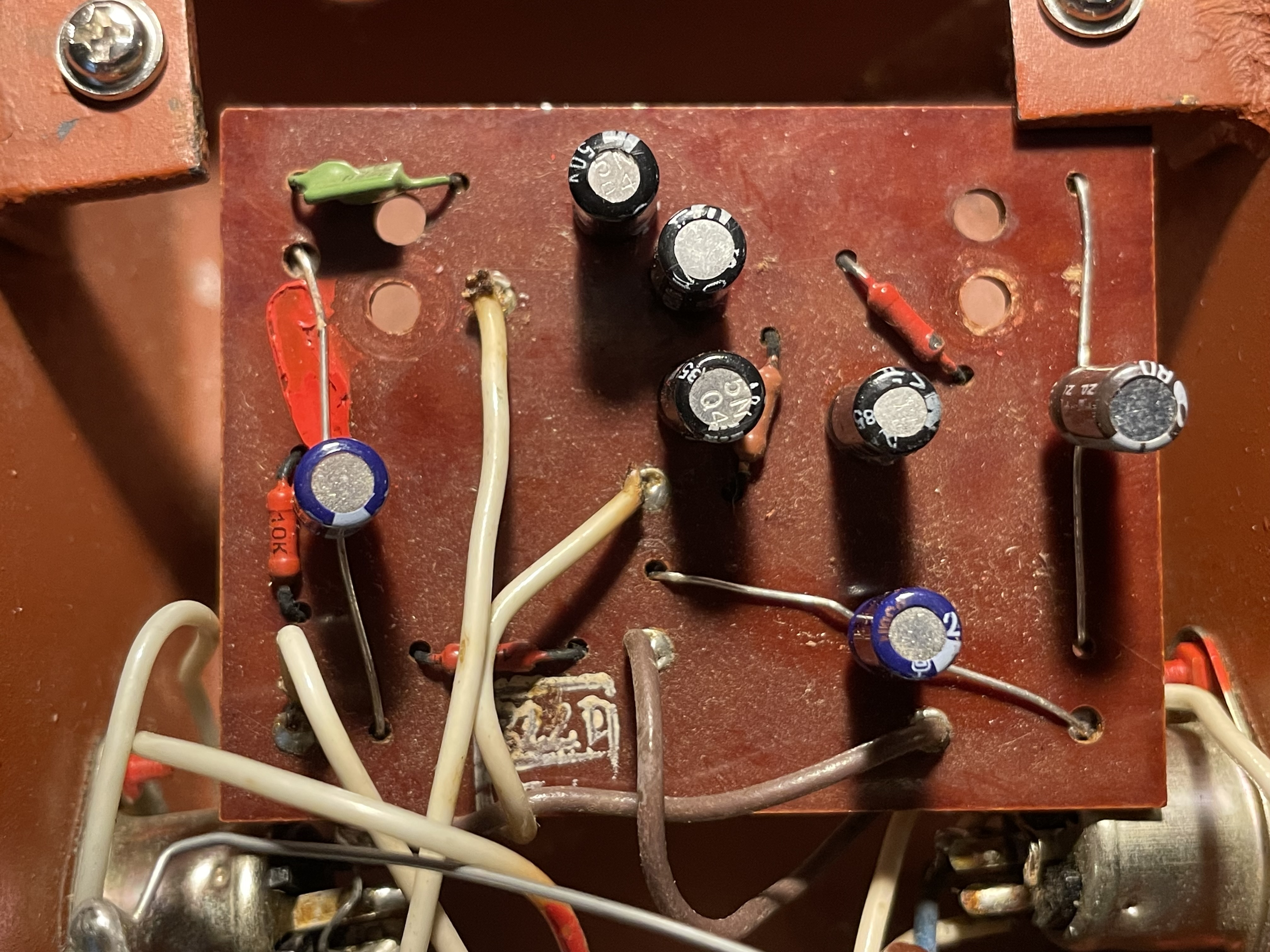 |
Top of PCB. It has been re-capped by someone before I acquired it. |
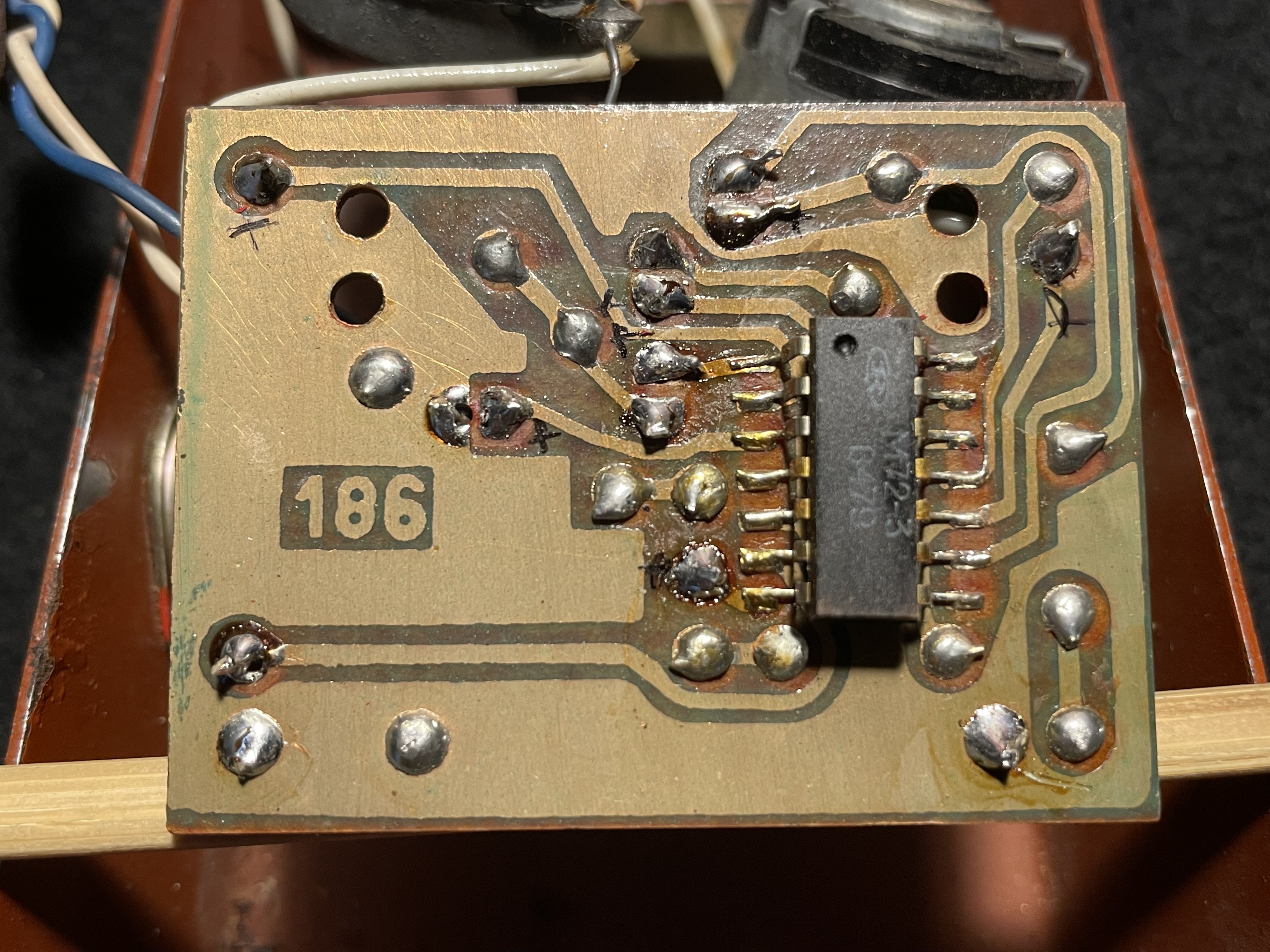 |
Bottom of PCB. At first glance, it appears that the IC chip is a surface mount type. |
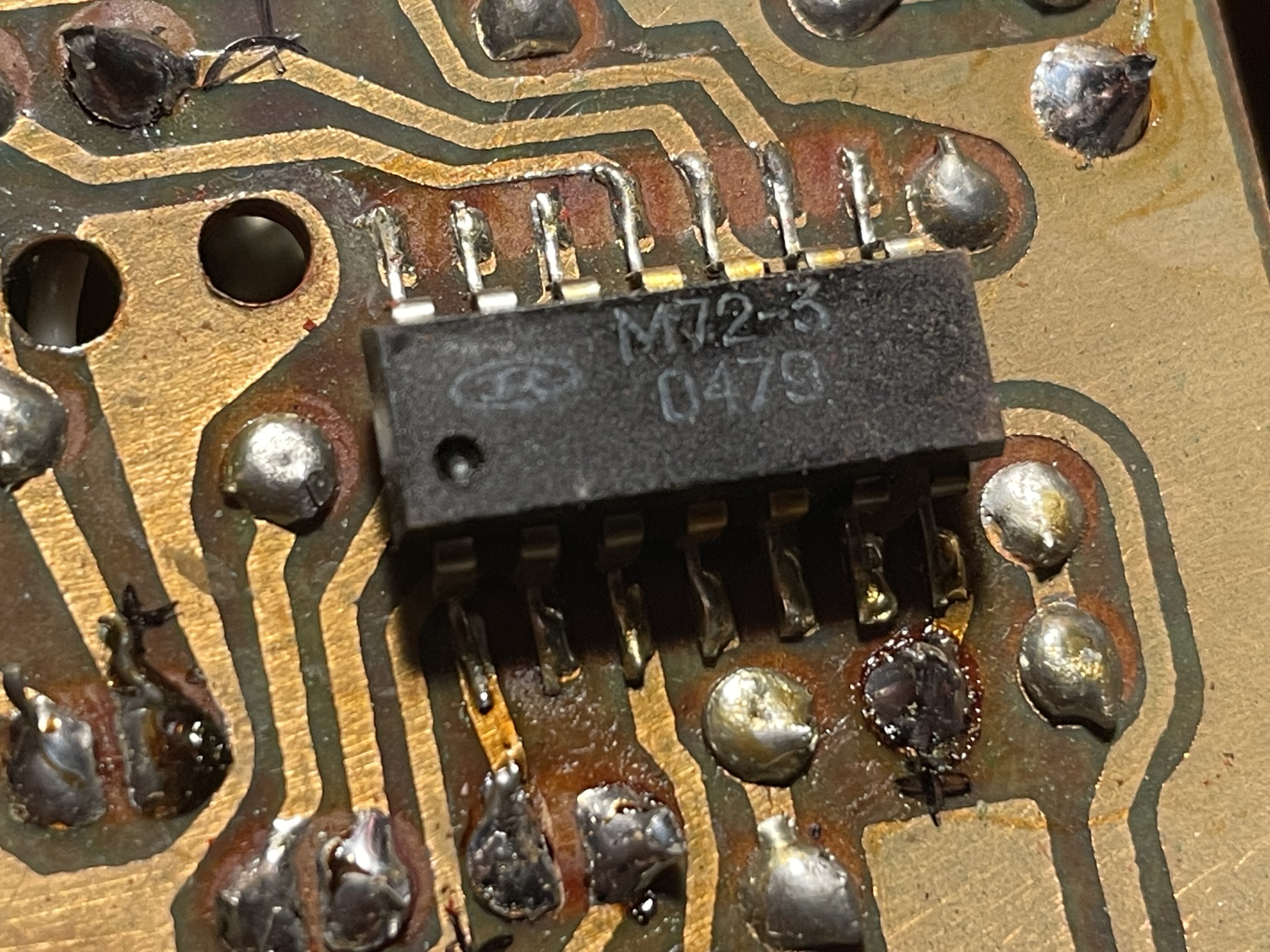 |
This is the IC chip, an M72-3. It doesn't look the most professional but it gets the job done. Notice how they made a thru hole IC chip into a surface mount by simply bending the pins over and then soldering them to the underside of the PCB. Date code indicates 1979 as the date of manufacture. |
Using this pedal is an interesting experience. It's sort of akin to playing a guitar that has sustainer pickups, in the way that it
blooms into the sustain. I like that a lot. It also adds quite a lot of sustain when used in conjunction with an overdrive pedal. You have to
be judicious with the controls as the noise floor can get a little out of hand, but in my opinion it's not really any noisier than an MXR DynaComp. It also
works well with piezo pickups. The attack and release times are fixed. The attack is reasonably fast and the release is a little on the slow side,
but that can be used to great effect once you get to know how this little pedal responds to how you play. According the owners manual the frequency
response is 60Hz to 10kHz, with a compression range of 40dB and a signal to noise ratio of -60dB.
Shown below is the LTSpice model with a simulated guitar string pluck. After the initial squash of the signal it bounces back up to a certain level after approx.
1.6 seconds and it remains nearly at that same level for quite a while. Here we are seeing a span of about 7.5 seconds. It will take more testing to determine how
close this model is to what I can observe in the real world.
